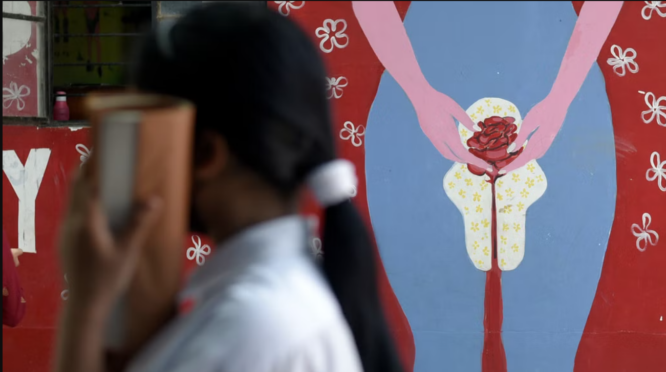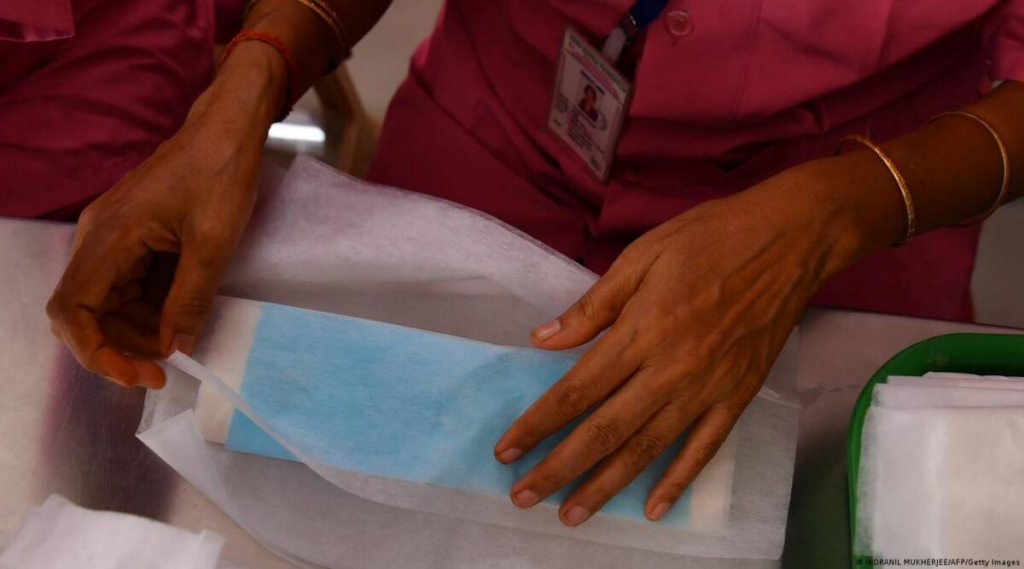
India: How is climate change affecting menstruation? 2023
Sanjh
- 0
In 2020, 28-year-old Suchita Jana and her family fled to a government shelter during Super Cyclone Amphan.
Her 20-day stay at the small school-turned-shelter lasted months. Jana got a vaginal infection after the typhoon.
Infection lasted 6-7 months. Jana, a resident of Khetramohanpur village in the Pathar Pratima block of 24 South Paraganas district in West Bengal, India, stated she got a terrible burning feeling and a heavy stench.
Jana and her family remained in a cyclone shelter with four toilets for hundreds of people, and men and women shared them.
Jana stated, “We would need to stand for hours in line to be able to use the toilet which was very filthy.” Water was a major issue since “there was just one tubewell for all the people at the shelter.”
Jana used cloth for days during the hurricane since she couldn’t access sanitary napkins and the shelter didn’t have a way to wash or dry them.
“First we waited for water, then the toilets. It would take hours.”
Jana traveled six hours over rivers to meet physicians in Kolkata, the state’s capital, after months of treatment at the block hospital didn’t work.
Last year’s Assam floods left Mamu Das, 32, of Nagaon district in Assam without basic sanitation and menstruation products, like Jana.

Das couldn’t afford sanitary napkins when the floods took her family’s jobs. I “borrowed” sanitary napkins from shops.
Natural catastrophe menstrual health
Floods and cyclones cause mass displacement. Women’s menstrual health suffers in relocated populations.
“At health camps during natural disasters, chronic diseases take priority so women usually don’t bring up issues related to menstrual health management,” said menstrual health campaigner Sobhan Mukherjee.
At refuge camps, women struggle with bathrooms, sanitary napkins, and infection risk.
The disaster’s stress stops women’s menstrual periods. “Sometimes, they skip their periods for months,” said Dr. Basab Mukherjee, vice president of the Bengal Obstetric & Gynaecological Society.
“After disasters like cyclones and floods, women are unable to maintain proper menstrual hygiene, so urinary tract infections, vaginal infections, etc. increase,” he told DW.
According to a research in the International Journal of Environmental Research and Public Health, climate change may modify the time of menarche, or first menstruation, increasing hazards for women.
The UN reported last year that “extreme weather events due to climate change disproportionately affect women and girls and their ability to perform their everyday tasks.”

In climate-vulnerable Indian tribes, males move for work, leaving women behind. Megha Desai of Desai Foundation, a menstrual equity NGO, stated, “Women have to deal with daily logistics that are greatly impacted by climate change.”
Southwest and northeast monsoon-influenced floods and cyclones displaced people in 2020 and 2021.
Tropical cyclones hit India’s eastern coast often. They’ve intensified recently. Scientists say climate change is to blame.
The Geneva-based Internal Displacement Monitoring Center reported in 2021 that over 2.4 million Indians were evacuated after category 5 hurricane Amphan hit the eastern coast.
across May, Amphan caused approximately five million evacuations across Bangladesh, India, Myanmar, and Bhutan.
Uma Charan Mohanty, a meteorologist and emeritus professor at the Indian Institute of Technology in Bhubaneswar’s School of Earth, Ocean, and Climate Sciences, told DW that higher temperatures increase the atmosphere’s moisture-holding capacity, allowing cyclones to retain energy for longer.
“Rising temperatures are causing more erratic rainfall patterns, which cause frequent floods,” he warned.


